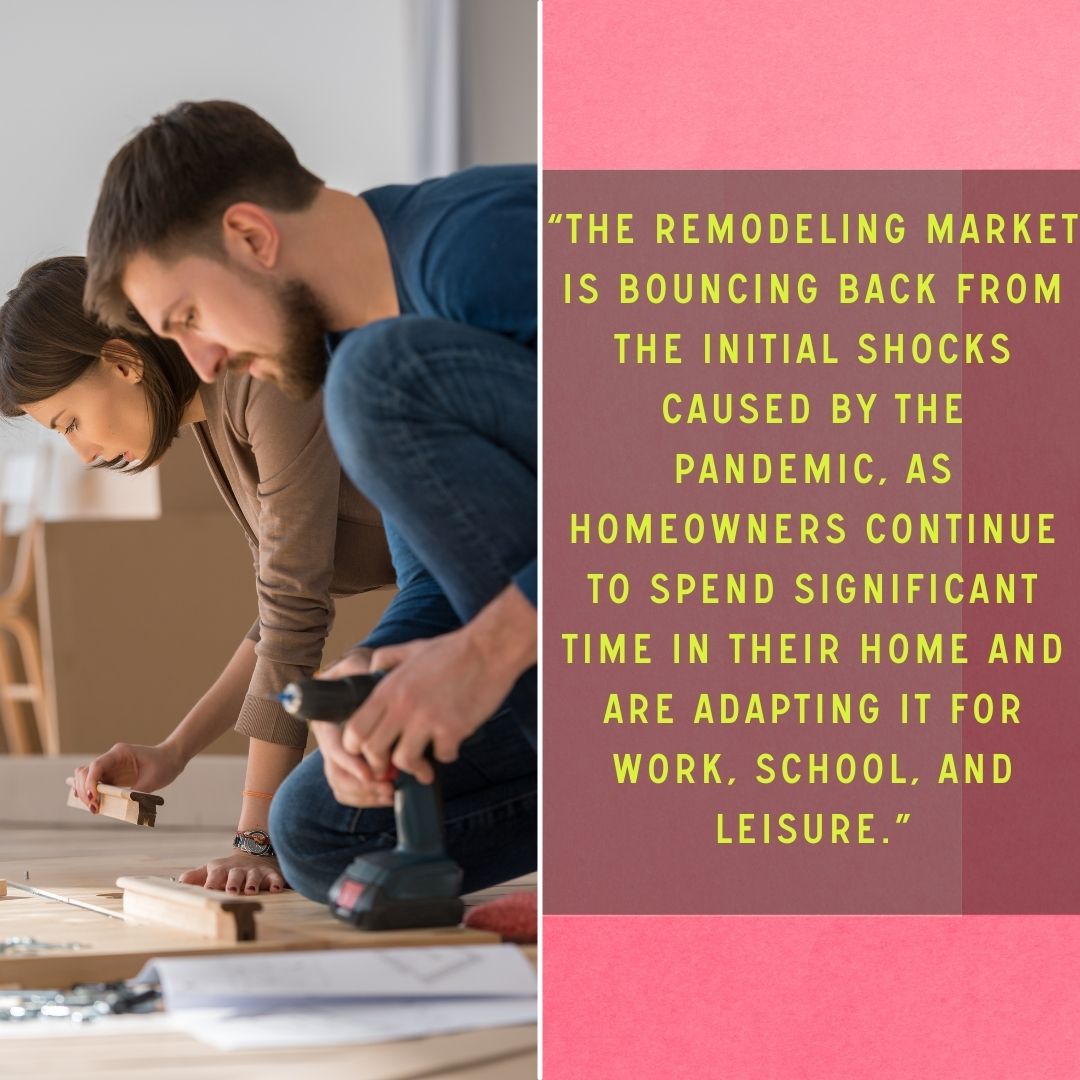This article originally appeared in The Denver Post, January 17th, 2021 by Aldo Svaldi
Spending more time in their homes, Coloradans’ make their houses offices
Being encouraged to stay indoors, many Colorado residents have felt a certain sense of “cabin-fever’. In some homes it is too cramped or outdated, and with options to “get out of the house” becoming increasingly limited a second time, homeowners are looking for solutions. Bur beyond the needs of fitting an entire lifestyle into a home, owners are seeing room for improvements. The once dated bathroom now has an unbearable hue in the eye of the homeowner or the creaking floorboards start to be even louder than usual. Homeowners are spending so much more time in the house, the defects they once tolerated are now becoming a pain point. As a result, a growing number of homeowners all over the Denver area and State have been spending a lot on remodeling.

Forced to face home defects all-day, homeowners take the initiative to remodel their homes
By being forced indoors all day, homeowners can be expected to face home defects 24/7. Even small issues and cosmetic gripes that were tolerated have become irritating to look at now that one has to look at it all day. This is where the fire for this unprecedented drive for home remodeling comes from. While it is true homeowners want more utility out of their home while the storm passes – they are reminded how their homes can come with flaws or fall behind from lack of maintenance. In comparison to a leased office space or workspace that has custodial contracts, a family home can look a bit more rugged. One would argue that a cleaner workspace could attribute to those able to focus more intently on their work. But regardless of the benefits, one thing is for sure, homeowners are noticing areas for home improvement.
In fact, a study from Harvard University cited that remodeling contractors would see a decrease in revenue in 2020 and 2021. However, by October the index showed an increase in remodeling activity by 4.1% in the first quarter of 2021. Chris Herbert, the managing director of the Joint Center for Housing Studies at Harvard states, “The remodeling market is bouncing back from the initial shocks caused by the pandemic, as homeowners continue to spend significant time in their home and are adapting it for work, school, and leisure.”
It is clear the initial wave of remodeling interest was DIY projects, as anyone who visited a Home Depot or Lowes last summer or fall can attest to. But local designers and contractors have reported increases in larger and more complex projects and increases far beyond what the Harvard report is predicting.
Judy Goldman, CEO of Design Studio Interior Solutions in Boulder, said her firm’s business was up 80% last year. This year is starting out strong as more people seek guidance in a process that the pandemic has stretched out and made more complicated.
“With people being in their home so much, their home means something different to them today,” Goldman said.

Coloradans’ are using their equity to fund renovations
Some people quickly realized they needed more utility from their abode, to make their homes function better for remote work and schooling. Others reached the breaking point after staring at worn flooring, cracking plaster, and depressing paint schemes. Money that might have gone to family vacations went to repairs, while others borrowed against home equity to fund interior refreshes, improvements to outdoor spaces, and kitchen and bathroom remodel.
“We have done 20 to 30 bathrooms,” Goldman said. “COVID-19 feels dirty to people. Nice bathrooms make them feel clean.”
Bigger projects, including complete makeovers and additions, have also grown in popularity. Toby Hertel, owner of AAA Home Improvements in Lakewood, specializes in $100,000-plus projects. He estimates his sales were up 30% last year from 2019, even after taking a six-week pause from pursuing new business during the spring lockdown.
“A majority of the work is people in existing homes not wanting to move on. In 2020 everybody was stuck at home staring at the wall they hated and wanting to make changes,” he said.
Since 2010, the median home price in the Denver Metro Area is up 82%, according to an affordability analysis by Point2Homes.com. Fortunately, mortgages that funded the homes kept rates low which aided in stagnant wages that haven’t kept up with steady increases in home prices. It is those very same rates that have given homeowners hope to take out personal and home improvement loans. The average amount borrowed was around $35,000. Now the average is closer to $125,000, reflecting both the added cost of revamping a home in today’s market, but also the equity accumulated after a decade of home price gains.
Those low rates have also fueled a buying boom that has left the inventory of homes for sale in metro Denver below 3,000 for the first time, a fraction of historic levels. Even if someone wanted to buy a bigger and better home, finding one won’t be easy. And that in turn is limiting new listings, creating a vicious cycle of constrained inventory.
Living with construction
Typically, homeowners who go under construction for a major remodel will leave the house during the duration of the work. Possibly stay with relatives or even go to an extended-stay hotel. But with a pandemic that has changed, homeowners have been putting up with construction dust and noise in order to stay safe. Some homeowners are even caught off-guard by the amount of dust and debris construction work can cause. Staying in a home full-time while crews are doing their work can be a receipt for failure unless there is good communication between a customer and the construction team.
Among the tasks, her firm handles for clients is ordering and securing the components needed and storing them in a warehouse so they are ready to go when contractors need them. That has proven essential given all the supply chain disruptions the pandemic has caused.
Even more, construction can take even longer than typical in the wake of the pandemic. Supply chains and distribution has been disrupted, causing issues with materials needed on site. There are shortages of standard materials that the industry was accustomed to having. So delays and cost increases are to be expected. An example would be a sheet of OSB plywood that went for $10 a sheet in the past shot up to $30 at one point.
Also, in consideration of personal safety, there are chances workers on a contracting team may be exposed to the virus – when that happens all work needs to stop and be evaluated while testing is done. Work crews can’t be scheduled on top of each other and must be staggered out, and contractors are falling ill or having to quarantine, which adds to costs and can delay completion. Labor costs are up 15% to 20% since the pandemic.
Connect With Us
Planning your next renovation, or maybe you are looking to do a complete remodel for your home? Whatever the task, it can’t hurt to ask. Reach out to our team through this form.
We can schedule a free consultation and discuss everything you need to get your project moving in the right direction. Did we mention, it’s absolutely free?


Recent Comments